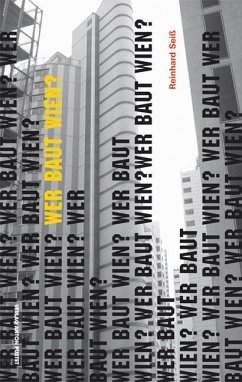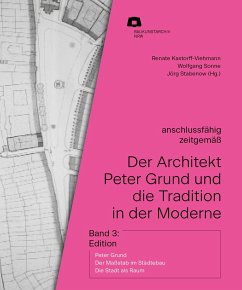
ESSEN RUHRMETROPOLE - Stadtentwicklung 21+
Strategien und Formate, Räume und Projekte
Herausgeber: Harter, Martin; Stadt Essen; Paetzel, Uli; Nellen, Dieter
Versandkostenfrei!
Sofort lieferbar
48,00 €
inkl. MwSt.

PAYBACK Punkte
0 °P sammeln!
Essen liegt in der Mitte des Ruhrgebietes, zwischen der Ruhr im Süden und der Emscher im Norden. In der Stadt haben die angestammten Industrie- und Energiekonzerne, Zweckverbände sowie Regionalagenturen der Metropole Ruhr ihren Sitz. Essen gilt nicht nur als zentraler Wirtschaftsstandort, sondern auch als eine Stadt im Umbruch. Dabei haben sich die Anforderungen an städteplanerische Prozesse über die Jahre stark verändert. Geradein Metropolen stehen immer weniger Flächen zur Verfügung, an die gleichzeitig immer höhere Ansprüche gestellt werden. Die vorliegende Publikation unternimmt d...
Essen liegt in der Mitte des Ruhrgebietes, zwischen der Ruhr im Süden und der Emscher im Norden. In der Stadt haben die angestammten Industrie- und Energiekonzerne, Zweckverbände sowie Regionalagenturen der Metropole Ruhr ihren Sitz. Essen gilt nicht nur als zentraler Wirtschaftsstandort, sondern auch als eine Stadt im Umbruch. Dabei haben sich die Anforderungen an städteplanerische Prozesse über die Jahre stark verändert. Geradein Metropolen stehen immer weniger Flächen zur Verfügung, an die gleichzeitig immer höhere Ansprüche gestellt werden. Die vorliegende Publikation unternimmt den Versuch, jenen inneren gesamtstädtischen Masterplan und jene Leitbilder in thematischen Kapiteln zu dokumentieren, mit denen die Stadt Essen im Zuge des industriellen Strukturwandels Strategien und Formate, Räume und Projekte im Sinne zeitgemäßer Urbanität realisiert. Dabei spielt die spezifische Topografie der Stadt eine prägende Rolle: Die konversionsbedürftigen Areale der früheren Montanindustrie konzentrieren sich im Norden und Westen, woraus sich eine Asymmetrie nach Himmelsrichtungen ergibt. Diese reicht von den etablierten Wohnlagen südlich der Autobahn A40 alsgefühlter innerstädtischer Sozialscheide hin zu den im Wandelbefindlichen Quartieren im Nordwesten. Autorinnen und Autoren, selbst mit der Stadtentwicklung befasst, beleuchten Aspekte der Transformation und gehen der Fragenach: Wie gestalten wir eine nachhaltige, lebenswerte, zukunftsfähige Stadt von morgen, die den globalen Anforderungen des 21. Jahrhunderts begegnen kann?





























